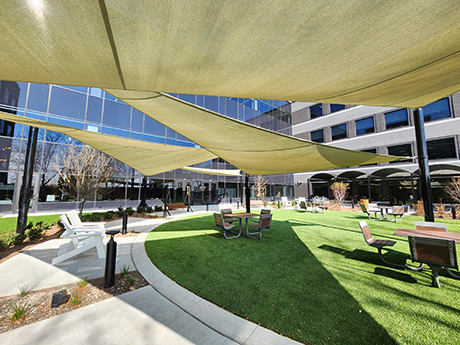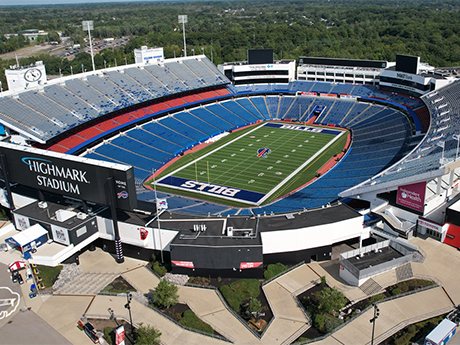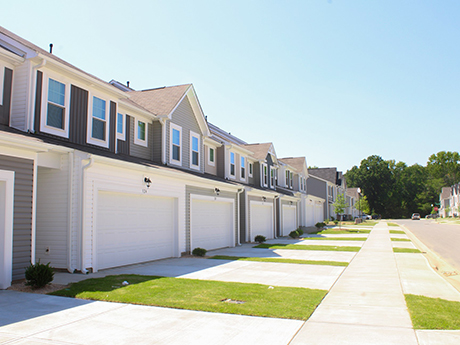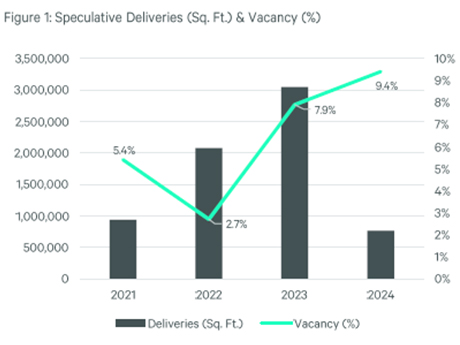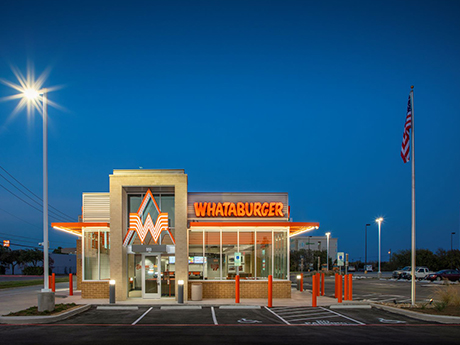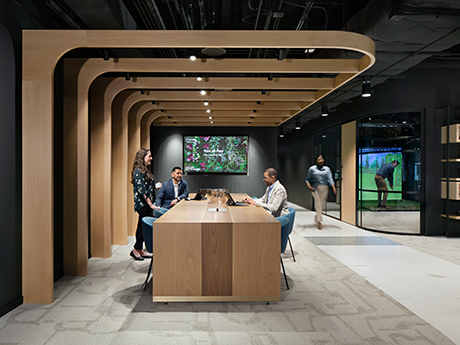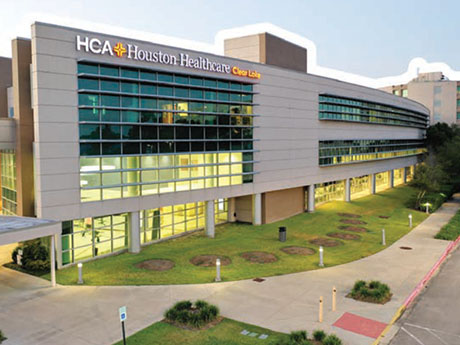By Maria Davis and Colton Rupprecht, R&R Real Estate Advisors In the real estate industry, customer expectations around office space have undergone a significant shift — both in what they need and what they want. It’s not just about square footage anymore; it’s about how that space functions, feels and aligns with the values of the companies who occupy it. This transformation is playing out in three critical areas: the rise of small, amenity-packed spaces; a surge in outdoor-focused design that brings the comforts of home into the workplace; and a more rooted and interactive approach to sustainability. Smarter spaces As more companies return to in-office work, many are rethinking how they use space — prioritizing flight to quality. Increasingly, customers are gravitating toward compact offices that offer high-impact amenities rather than expansive square footage. These smaller footprints are more efficient, but they also demand more thoughtful design and planning. Technology is key in amenity designing, as efficient developers are integrating infrastructure that anticipates the needs of a tech-forward workforce. Whether it’s bracketing out spaces for high-speed fiber and built-in video conferencing hubs or artificial intelligence (AI)-powered building systems that manage lighting, the design is important in making a more …
Market Reports
— By Jason Koch and Adam Riddle of MMG Real Estate Advisors — espite recent challenges, the Denver multifamily market is showing clear signs of a comeback. With new supply beginning to taper off, demand accelerating, and investor confidence returning, 2025 is shaping up to be a year of renewed opportunity for multifamily owners and investors. Momentum Is Building Behind the Numbers After a year of downward pressure, Denver’s multifamily market is beginning to turn the corner. First-quarter 2025 recorded net absorption of 2,544 units, a 170 percent jump from the prior quarter indicating a surge of renter demand. Over the past 12 months, absorption reached 9,200 units, the highest total since 2021. MMG Managing Director Jason Koch notes, “Demand is back. Lease-ups are moving more quickly, especially for quality, well-located product. It’s clear that renters still want to be in Denver.” While average rent is down 3.4 percent year-over-year, the first quarterly uptick in nearly a year suggests the bottom may already be behind us. At $1,813, Denver remains one of the strongest-performing rental markets in the Mountain West, particularly in suburban pockets where new supply is limited. High-Quality Product Leading the Charge Much of the recent absorption has …
By Tom Kucharski, CEO of Invest Buffalo Niagara When Ralph Wilson selected Buffalo to be the home of the new Bills franchise in the American Football League in the 1950s, it was one of the nation’s 10 highest populated cities, making it a natural fit. However, a general shift around the country away from traditional manufacturing as a major base for economic activity, combined with a number of other factors, led to a decline in the city’s employment and population bases in the ensuing decades. Over the past 25 years, Buffalo has reversed that trend, emerging as a city on the rise. The region recently saw its first population growth in over 70 years, according to the 2020 census. That growth has been spurred by a diversification of the local economy, attracting businesses in industries such as advanced manufacturing, food processing and life sciences. Companies were especially enticed by the region’s low cost of doing business and affordable energy supplied by the nearby Niagara River. A key to maintaining that momentum has been Buffalo’s self-reinvestment, including massive redevelopment projects centered around reclaiming the city’s waterfront district. The first wave of these efforts began about a decade ago. Specifically, prior to …
Charlotte’s multifamily market is turning a corner after a once-in-a-generation supply wave that introduced 19,000 new apartments into the metro area in 2024. While rent growth will be muted for most of the year as the market continues to absorb the new supply, the dynamic will shift toward the end of 2025, putting landlords back in the driver’s seat. Record-low new apartment starts this year, combined with steady population growth and an economic climate that favors renting over owning will boost leasing activity in the second half of the year — and may even produce rent growth for the first time since 2022. Fundamentals in play Like many other Sun Belt cities, Charlotte has been on a joyride of growth stemming from in-migration since the COVID-19 pandemic. The city’s population expanded 2.2 percent between 2023 and 2024, making it one of the fastest-growing markets in the Southeast. Another 56,000 new residents are expected to move in by the end of the year, according to research from Berkadia. The long-term forecast for population growth is even rosier: the Charlotte Regional Business Alliance forecasts the metro population will surge by 50 percent over the next 25 years, driving demand for housing. Tariff …
By Harrison Kruse and Ned Turner, CBRE As we near the second half of 2025, the Des Moines industrial market is starting to see a shift in fundamentals, as new deliveries and the pipeline of new big-box speculative warehouse product have come to a complete halt. Like many cities in the upper Midwest post-COVID, the Des Moines MSA saw an influx of out-of-state developers backed by institutional capital go ground up with new big-box product when the economy was stimulated by the Federal Reserve reducing the federal funds rate below 1 percent. This resulted in historically compressed treasury yields and an abundant amount of liquidity injected into the capital markets. This effect on the national economy escalated consumer demand for e-commerce and locally, ag-related products, which are the state of Iowa’s most valuable export on an aggregate basis. The Des Moines MSA between 2021 and 2024 had more than 6.8 million square feet of new industrial space delivered to the market, which is about 10.2 percent of the total market size on a square-foot basis. During those years, net absorption increased on an annual basis between 800,000 and 1.5 million square feet. Pre-COVID, Des Moines’s average net absorption was between …
— By William (Bill) Froelich of Colliers — s of first-quarter 2025, Oahu’s industrial market remains one of the tightest in the nation — but signs of softening are emerging. Our 41.9 million square foot market reported a vacancy rate of 1.2 percent, the highest in over two years, up from 0.9 percent in fourth-quarter 2024 and a near-record low of 0.6 percent in third-quarter 2023. Net absorption was negative at -115,001 square feet in first-quarter 2025, marking the fifth quarter of negative net absorption in the last six. Despite this, direct weighted average asking base rents reached a new high of $1.56 per square foot per month, reflecting continued landlord leverage in a market with severely constrained supply. Industrial operating expenses also rose, averaging $0.54 per square foot monthly, pushing our gross rents over $2.00 per square foot. Raw Land Market: A Race to Buy Before It’s Gone In a typical year, Oahu absorbs 10 to 20 acres of raw industrial land. But in a short period between the end of 2021 and the first half of 2022, over 100 acres had traded, driven by high-profile acquisitions such as Amazon’s 50-acre purchase and Costco’s 45-acre site purchased for almost …
AUSTIN, TEXAS — The concept of locating similar types of commercial real estate uses in close proximity to one another to allow those users to naturally develop synergies — clustering — is an age-old practice in certain asset classes like office, retail and hospitality. But the strategy can make sense for industrial real estate as well, especially in a time in which new subcategories of industrial uses are attracting capital and generating demand for space. Logistics and distribution users, for example, typically identify transportation costs as their top line item on the expense side of the ledger. Those companies have little choice but to pay top dollar for land or space near the rooftops of their existing customer bases so as to minimize transit costs. Editor’s note: InterFace Conference Group, a division of France Media Inc., produces networking and educational conferences for commercial real estate executives. To sign up for email announcements about specific events, visit www.interfaceconferencegroup.com/subscribe. Data center users cannot properly and profitably function without access to cheap electricity, hence the ability of Texas to land many of those deals via its deregulated power grid. Suppliers of smaller industrial parts and components are often supported by a handful of major manufacturers, and …
Charlotte: “The Queen City” named after Queen Charlotte, wife of George III, has been on a tear post-COVID with new and expanding retail concepts. Vacancy rates have hovered under 4 percent the last few years, with little signs of changing , according to research from Institutional Property Advisors (IPA). Much of that vacancy has occurred in less desirable markets, or in junior and big-box bankruptcies (JOANN, Big Lots, Party City, etc.) that are being snatched up as quickly as they become vacant. Tenants are desperate and clamoring for new locations to keep up with the strong residential growth (24,000+ new residents in the city limits in 2024 and 46,000 in the CSA), making charlotte the 14th largest city in the country, and 19th-largest CSA in terms of overall population. This factor combined with unemployment hovering in the low 4 percent range, plus household income growth has called for desperate measures to ID new space or weakness in the market. We as local experts have seen a slight uptick, over the past 12 months, in some “shadow inventory.” This occurring when an existing retailer or restaurant might be struggling with sales, or in partial default, and the landlord has the opportunity …
By Ben Azulay, Bradford Allen As summer approaches, I’m noticing Chicago’s downtown buzzing with renewed energy, and new signs that the Loop’s office market is heating up as well. In fact, research by my firm, Bradford Allen, suggests a Chicago office market nearing its bottom and poised for recovery. Improved leasing activity, strategic landlord adaptations and discounted sales are reshaping downtown Chicago’s market, particularly in high-demand submarkets like the West Loop and Fulton Market. Client certainty Office tenants in downtown Chicago are demonstrating increased confidence about their space needs, as reflected in significant expansion deals and long-term commitments. In fact, office expansions drove at least five of the 10 largest leases signed during the first quarter, including Stripe more than doubling its footprint at 350 N. Orleans from 45,000 to 89,000 square feet and Blue Owl’s second expansion at 150 N. Riverside from 27,000 square feet to 54,000 square feet. Large new leases included BP renewing 240,000 square feet at the CME Center, and Goldman Ismail signing a 43,000-square-foot deal at 191 N. Wacker. Leasing volume totaled 1.7 million square feet, up from 1.3 million square feet year-over-year, with the West Loop alone securing 916,760 square feet of leasing activity. …
By Taylor Williams The municipalities that comprise Houston’s southeastern suburban rings are on the rise, fueled not only by the larger population growth that has defined Texas in the 21st century, but also by expanded commerce and real estate development tied to the ports of Houston and Galveston. These municipalities vary tremendously from one to the next with regard to their size, both land- and population-wise. In addition, they possess varying degrees of maturity in terms of their microeconomies and real estate markets. Yet among the four cities in this region that Texas Real Estate Business spoke with for this story — Alvin, Webster, League City and Nassau Bay — some commonalities exist within their economic development endeavors. These include drawing on growth in the hospitality sector from the Port of Galveston’s thriving cruise business, as well as preparing for future real estate opportunities that will emerge from infrastructural projects, most notably the expansion of State Highway 99, known locally as Grand Parkway. As these cities work to expand their housing inventories, recruit new businesses and provide the ideal mixes of retail, restaurant and entertainment uses, they look to both traditional and new economic drivers. In doing so, they cultivate …
Newer Posts


